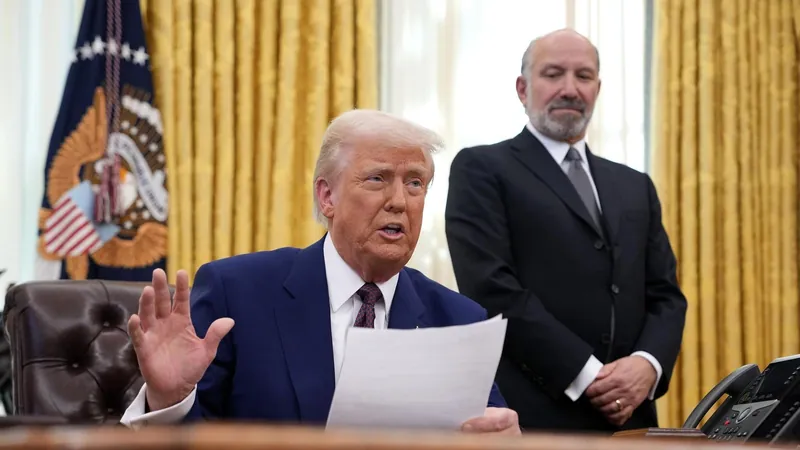
Trump Teases Major Trade Policy Change: What to Expect on 'Liberation Day'
2025-03-24
Author: Wai
Overview
In just over a week, President Donald Trump is set to unveil what he claims will be his most significant trade policy yet—reciprocal tariffs. Scheduled for April 2, he has dubbed this date “Liberation Day” for American trade. However, uncertainty abounds regarding which countries and products will be affected, and the president hinted on Monday that the impact of the new tariffs might be less severe than initially anticipated.
Key Highlights
In a press briefing at the White House on Monday, Trump described April 2 as “a big day” but suggested that the administration may exercise flexibility with the forthcoming tariffs. He mentioned he 'may give a lot of countries breaks,' suggesting that the U.S. might adopt a more generous approach than merely matching foreign tariffs.
Economists from UBS have noted that if the administration were to implement a thorough country-by-country reciprocal tariff plan, it would require an overwhelming 2.5 million individual tariff rates. This staggering figure raises doubts about the administration’s ability to implement such a detailed policy in time for next week.
Market Reaction
Investor sentiment following Trump's comments reflected optimism that the impending tariffs may not be as harsh as previously feared. Stocks rallied on Monday, with the S&P 500 climbing nearly 2% to reach its highest level since early March. Notably, companies like Tesla and Nvidia—often viewed as the most vulnerable to extreme tariffs—saw significant stock gains.
Background Context
Tesla has been vocally cautioning the Trump administration about the potential negative effects of new tariffs on American businesses operating in global markets. This concern is particularly notable given Elon Musk's weight in the economic landscape, often considered one of the most influential figures in Washington, second only to Trump himself.
Despite the recent market rally, stocks have experienced a downturn as Trump's evolving trade policy continues to create volatility. As it stands, the S&P 500 is trading around 6% lower than its peak in February. While reciprocal tariffs could become a game-changer for U.S. imports, Trump has already initiated several tariff measures, including a 25% tax on steel and aluminum, alongside a 20% duty on Chinese imports. Economists broadly agree that these tariffs have contributed to inflation, with importers likely passing on the costs to consumers in the near future.
What Comes Next?
As April 2 approaches, all eyes will be on the White House to better understand the details and potential ramifications of Trump's announced trade policy. Will 'Liberation Day' offer genuine relief for American businesses, or will it lead to further economic uncertainty? Only time will tell as we await this pivotal policy shift.


 Brasil (PT)
Brasil (PT)
 Canada (EN)
Canada (EN)
 Chile (ES)
Chile (ES)
 Česko (CS)
Česko (CS)
 대한민국 (KO)
대한민국 (KO)
 España (ES)
España (ES)
 France (FR)
France (FR)
 Hong Kong (EN)
Hong Kong (EN)
 Italia (IT)
Italia (IT)
 日本 (JA)
日本 (JA)
 Magyarország (HU)
Magyarország (HU)
 Norge (NO)
Norge (NO)
 Polska (PL)
Polska (PL)
 Schweiz (DE)
Schweiz (DE)
 Singapore (EN)
Singapore (EN)
 Sverige (SV)
Sverige (SV)
 Suomi (FI)
Suomi (FI)
 Türkiye (TR)
Türkiye (TR)
 الإمارات العربية المتحدة (AR)
الإمارات العربية المتحدة (AR)